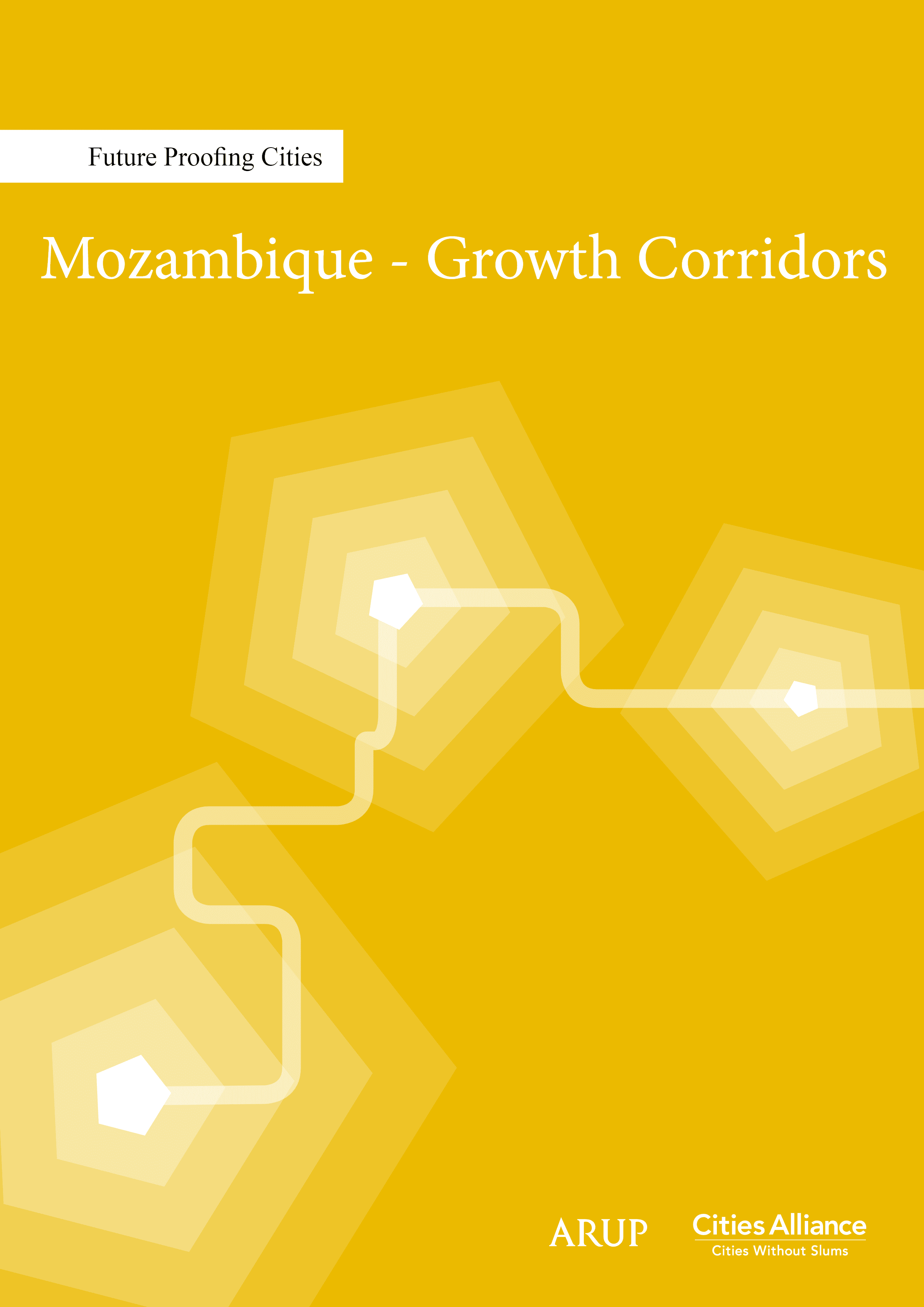- Who We Are
- How We Work
- Regional / Country Initiatives
- Legacy
- Core Themes
- Working Groups
- Portfolio & Results
- Newsroom
- Resources
Future Proofing Cities: Mozambique

The Future-Proofing Cities Studies cover cities in Ethiopia, Ghana, Mozambique and Uganda. These studies form an integral part of the Future Cities Africa (FCA) Programme that the Cities Alliance has undertaken with financial support of DFID. They are part of an in-depth feasibility and scoping phase to develop diagnostic tools to enable cities to realise their growth potential and begin to guide this growth toward a more resilient and inclusive future. Two tools are used as part of the data analysis to help dig-deeper into the capacity to act and risks in the cities – the Cities Alliance Normative Framework and the Arup Environmental Risk Framework.
Mozambique’s rapid economic growth since 1994 has been accompanied by renewed national focus on economic development policies centred around urban areas. National policy seeks to set up growth corridors through different parts of the country to achieve economic, human development and regional co-operation goals. The development corridor policy has resulted in the establishment of the Maputo, Beira, and Nacala corridors – the latter being the focus of this report. This corridor links the resource-rich Tete province to the port of Nacala, one of the deepest natural ports on the eastern coast of Africa.
The study reveals three key determinants for the future of the three main cities within the corridor (Tete, Nampula and Nacala):
Emerging models of local governance
Like most African cities, urban governance along the Nacala Corridor shares common issues (e.g. lack of financial and technical capacity). In this context, a growth corridor policy where the central government is the main driver of development opportunities seems an appropriate solution. Innovative service delivery models have begun to meet the demand and fill the void in these cities (e.g. private investment), not without problems such as lack of inclusiveness, local empowerment or the ability to address environmental hazards. Nevertheless, there are interesting models moving towards empowering local governments in their own ways, such as the formation of a provincial coordination agency (UCODIN) at the provincial level as in Nampula, or the creation of community development funds to finance local projects as in Tete. All three models should continue to focus on a partnership approach with an overall objective to improve local governance capacity.
Vulnerability to climate change
Mozambique is expected to be one of the worst-affected countries due to climate change. The major effects of climate change occur primarily in the countryside surrounding Tete and Nampula, which have high rural populations primarily engaged in agriculture. For Nacala, the impact of climate change may be more direct, with sea level rise projected to affect 75% of its area. For cities with low urban service coverage and quality, increased migration may exacerbate the existing situation. Large infrastructure investments in northern Mozambique seem particularly vulnerable to climate change.
Low carbon development
A low economic base and a number of avenues for sustained economic growth presents an opportunity to mainstream low-carbon emission development as the basis for future growth – particularly considering that, in most part, policy instruments to promote low-carbon development exist in Mozambique. For a majority rural country which is dependent on subsistence agriculture, the initiatives with the greatest impact involve agriculture. Increasing farm productivity can help address deforestation and stem rural-urban migration. Integrated rural land-use planning can also mediate between land for mining and agriculture. Effective, multi-use urban planning and the promotion of mass transportation will help address high levels of informality and prepare cities for continued population growth.


